Indoor hydrangea flower: how to propagate and care?
A bush of amazing beauty, covered with caps of bright inflorescences, can be found in the flower beds of many household plots - this is hydrangea... But not everyone knows that this is not only a garden flower, caring breeders have created many varieties of indoor hydrangeas.
Under certain conditions and special care, this beautiful flower can also be grown at home. If you know how to properly care for a plant, you can also decorate your windowsill with such an exquisite flower.
Content:
- Description of the flower and the best varieties
- Growing conditions for indoor hydrangea
- How to properly care for a flower?
- Reproduction: methods and rules
- Diseases and pests, their signs and control of them
Description of the flower and the best varieties
Indoor hydrangea is a low, spreading semi-shrub plant with wide dark green leaves carved along the edges. Its umbellate inflorescences have a rather large (up to 35 cm) spherical shape.
Interestingly, the color scheme of flowers depends on the soil in which the bush grows.
By applying acidic soil, you can get blue flowers; neutral soil will give white and cream color; using alkaline soil, you can grow pink or lilac hydrangeas. With good care, a plant bush can reach 1 meter and have up to 6-7 large inflorescences on itself.
There are more than 100 varieties of potted hydrangeas, among them blue "Ramars Mars", "Earley Blue", red "Prima", "Red sensation", pink "Europe", "Hamburg", "Goliath", as well as cream "Soeur Therese" and "Mouillere".
Growing conditions for indoor hydrangea
Hydrangea is not an easy-to-grow crop. The plant needs certain conditions of maintenance and the observance of several rules related to care, especially during the formation of future flowers and preparation of the flower for wintering.
What conditions does a flower need:
- A deciduous plant sheds foliage during dormancy even under indoor conditions. In winter, the flower goes into hibernation for three months, it needs to be taken out to a cool place, watering should be reduced and feeding should be stopped. In the spring, the plant returns to a warm and bright place, where it will begin to green up.
- Direct sunlight is contraindicated for him and it is better not to leave the flower on the southern window, since the sun can destroy foliage and flowering. Hydrangea does not like a sharp change. lighting, even in autumn and in cloudy weather, the flower needs light, on such days it is better to use a daylight lamp. Lack of lighting will lead to diseases, the flower will weaken or become the property of pests.
- In addition to light, the flower needs fresh air, the room in which it grows is ventilated, but only without a draft. In the summertime, it is best for him to be in a shaded loggia or balcony, where it is much cooler than in the room.
- A comfortable temperature for a flower should not exceed 20 degrees. In winter, it should be between 4 and 9 degrees. The plant itself will indicate the wrong temperature regime, it will immediately drop a couple of leaves.
- Air humidity also plays an important role in growing a flower, it must be maintained.There should always be water nearby. It can be a dish with moss, an additional tray or other containers, a humidifier is the best option.
During the period of plant growth, the soil in the pot must be carefully loosened, weak and dried shoots must be removed.
How to properly care for a flower?
Indoor plant care tips:
- Hydrangea is a moisture-loving flower and needs constant watering, it is cut only during the wintering period. When the flower hibernates, you just need to not let the soil dry out. During the period of growth and flowering, watering should be abundant, but only it must be carried out correctly. It is best to water the bush around the plant along the edge of the pot, the root should not be wet, and moisture should be near it. With this watering, the root will not rot and the plant will not die. Water for irrigation should be soft, chlorine-free and not cold.
- Feeding the flower in the summer organic or mineral fertilizers... Once a week, the flower can be watered with a solution that is prepared from equal proportions (30 g each) of potassium sulfate, superphosphate and ammonium nitrate mixed with a bucket of water. You can also use ready-made hydrangea fertilizers available at any flower shop. When using them, you must carefully read the instructions for use and strictly follow them. You should not overdo it with feeding either, especially if the plant does not need it.
- The plant is cut off before wintering: two-thirds of the trunk is removed. The plant is covered with a protective material and taken to a cool place, it can be a glazed balcony. If the tops of the plant freeze, do not be upset, spring pruning will fix everything: the flower will grow back, start up new foliage and bloom beautifully.
It is necessary to transplant the plant carefully: drainage must be placed on the bottom of the pot, only then the necessary soil into which the plant is lowered, then the rest of the substrate is poured so that the root is in a horizontal position. Then the bush is watered and sprinkled with peat or mulch, which will prevent moisture from evaporating. The bush of the plant needs to be transplanted annually into fertile soil with turf, foliage, earth and sand. It is better to choose a wide pot, since the root system of the hydrangea is horizontal.
Reproduction: methods and rules
Hydrangea propagates by dividing the bush, seeds and cuttings:
- Dividing the bush... A simple way, but it requires caution. With this method, the shoots should have a formed root and a certain growth. Having separated, they are shortened and transplanted into pots in the usual way.
- Planting seeds. The seeds should be sown at the end of winter. Hydrangea seeds are sown shallowly into sod moistened soil and covered with foil or glass. Crops must be opened daily for ventilation and moistened by spraying with warm water. Already matured seedlings are transplanted into a larger pot for further growth.
- Cuttings... At the beginning of winter, cuttings are cut from the basal shoots of hydrangea. Their length is 6-8 cm, each should have two or three internodes. They need to be treated with a root system stimulant and planted in a substrate of peat and sand. Then they need to be watered and covered with a jar. Such containers should be stored at a temperature of 15-20 degrees in a bright place. After 4 weeks, the plants will take root and are ready for transplantation.
Any selected type of hydrangea breeding will be equally successful, but it is important to follow all the rules and take into account the characteristics of each of them.
Diseases and pests, their signs and control
With poor care, indoor hydrangea can hit aphid or a spider mite. Due to watering with lime water, the flower can get sick with chlorosis. The bush sometimes gets sick powdery mildew or gray mold.
You can fight problems, but each is treated in its own way:
- Aphids are destroyed with soapy water, in advanced cases - actellik or karbofos.
- The spider mite is eliminated with humidified air - the flower is sprayed with warm water. In case of severe damage, it is necessary to remove the diseased leaves and treat the bush with actellik, and even more effectively with acarin.
- With stem nematode, when the stem is affected, and ring spot (light round spots on the leaves), the entire plant is destroyed.
- Powdery mildew and gray mold attack leaves, stems and flowers. For treatment, bad leaves are removed and the whole plant is processed bordeaux liquid.
- When watering is scarce, the leaves wrinkle and darken, immersing the pot in water can save the plant.
- A 1% solution is used to restore chlorophyll ferrous sulfate or ferrous sulfate in a ratio of 2 g per liter of water. After a couple of watering, the leaves will turn green again.
- If the hydrangea does not bloom for a long time, you can speed up the process by spraying the plant with a 1% gibberellin solution. The drug increases the length of the peduncle and the diameter of the flower, and therefore the inflorescence. It does not affect the height of the plant itself.
- The hydrangea differs in a rich decorative type in the first year of growth, the next year the shoots may lose their basic shape, the inflorescences usually become smaller. Gibberellin can correct this problem.
Observing all the rules for caring for the plant, you will get a healthy and beautiful flower - a magnificent hydrangea... When growing it, you need to be patient, but with the right approach, the plant will thank you with lush flowers, from which it is really difficult to take an admiring look away.
More information can be found in the video:



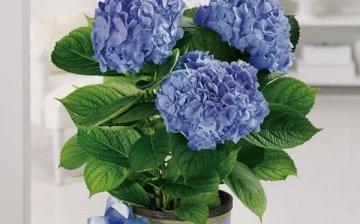
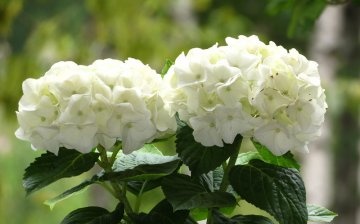
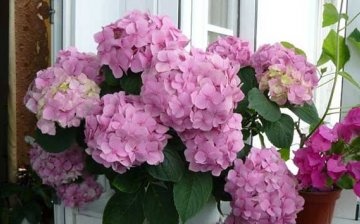
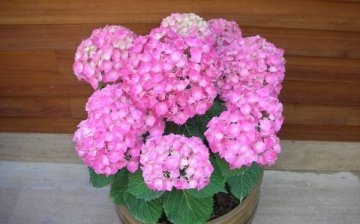








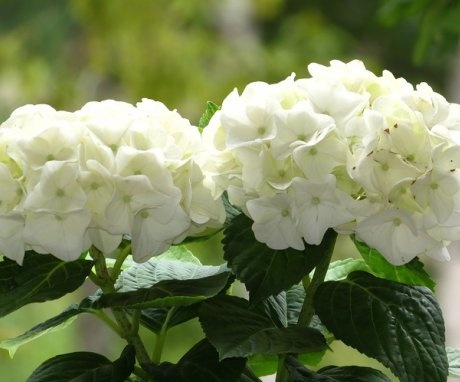
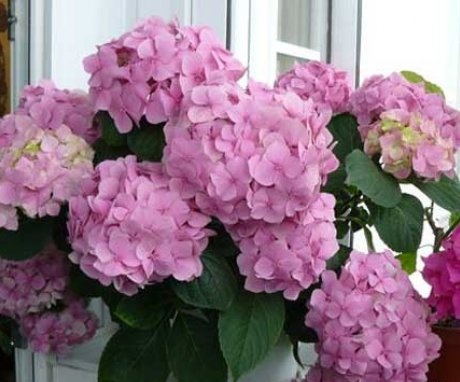
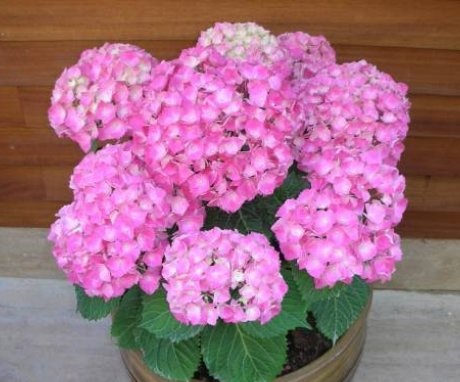
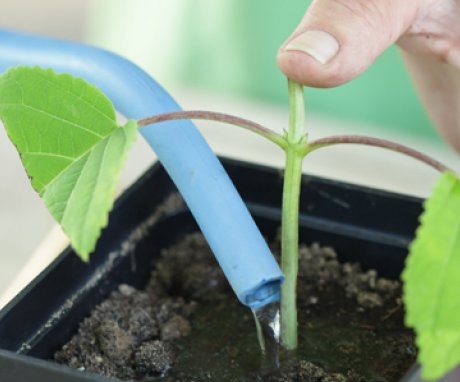
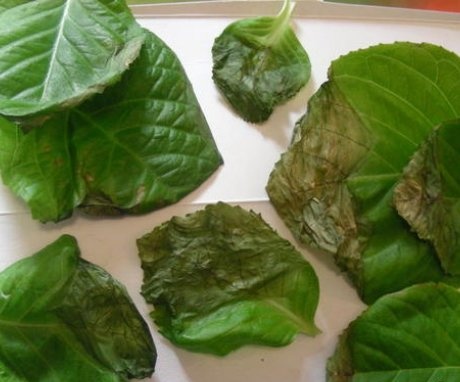
It is better to propagate by division, the easiest way, otherwise by seeds, and especially by cuttings, at one time I was very worn out. But if you take care of them, as it should be, by the way, many important points are described in the article, they grow very well and are pleasing to the eye.
I absolutely agree that growing hydrangeas requires certain conditions, which are not always possible to create. My flower feels great on the east window, where there is no direct sunlight and draft.
I absolutely agree that growing hydrangeas requires certain conditions, which are not always possible to create. They gave me a flower, she herself would hardly have dared to buy it, knowing how fastidious he is. But the flower feels great on the east window, where there is no direct sunlight and draft.